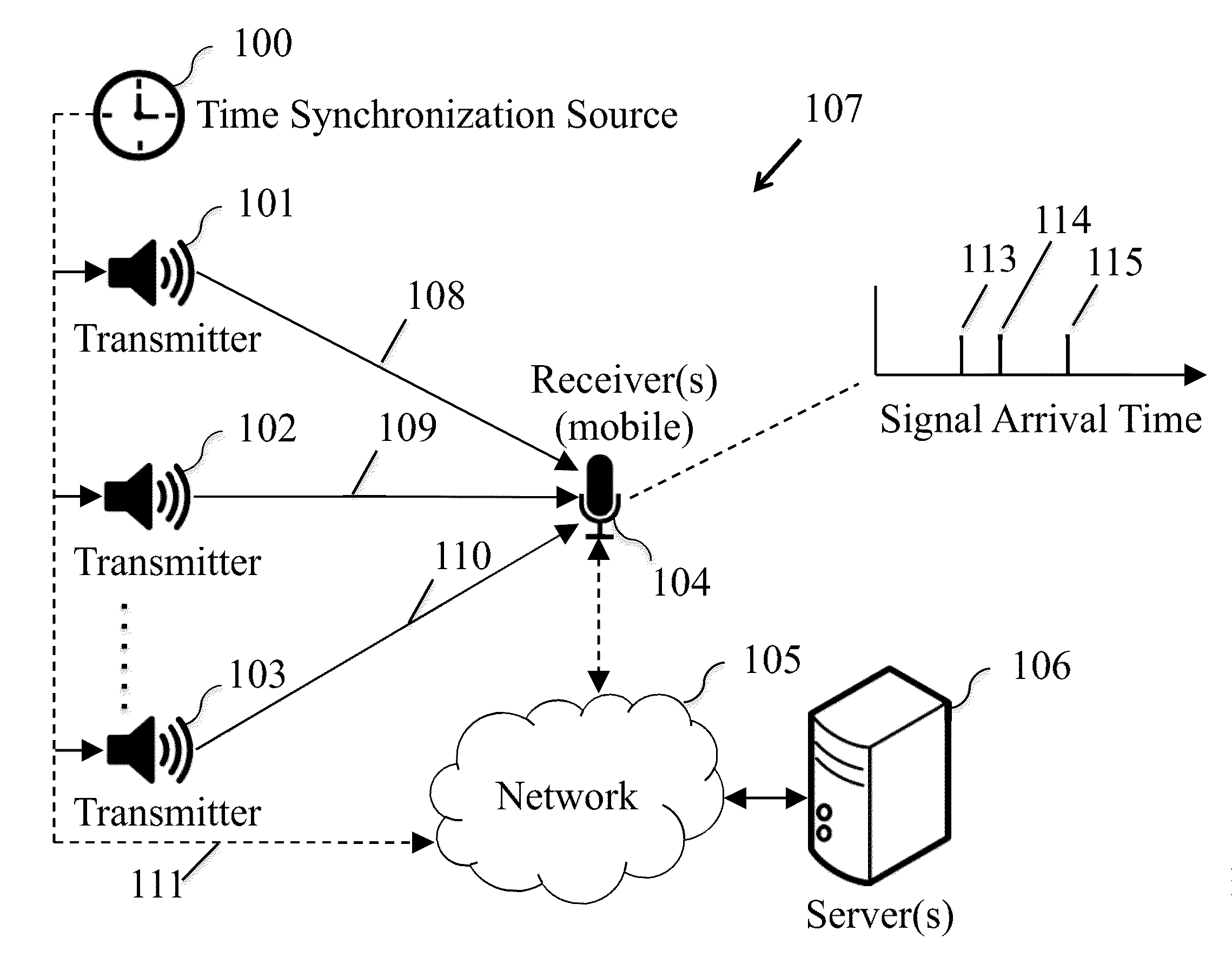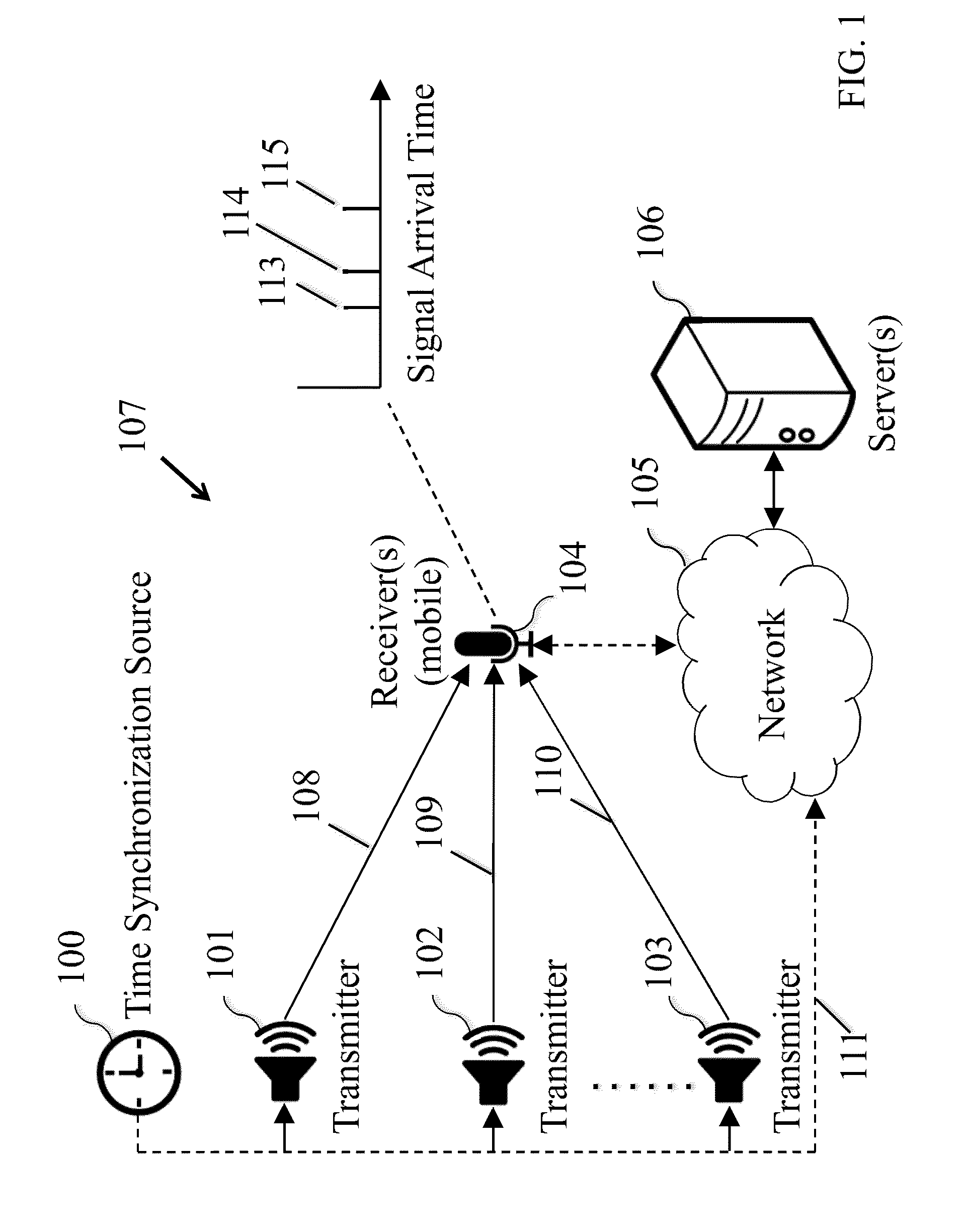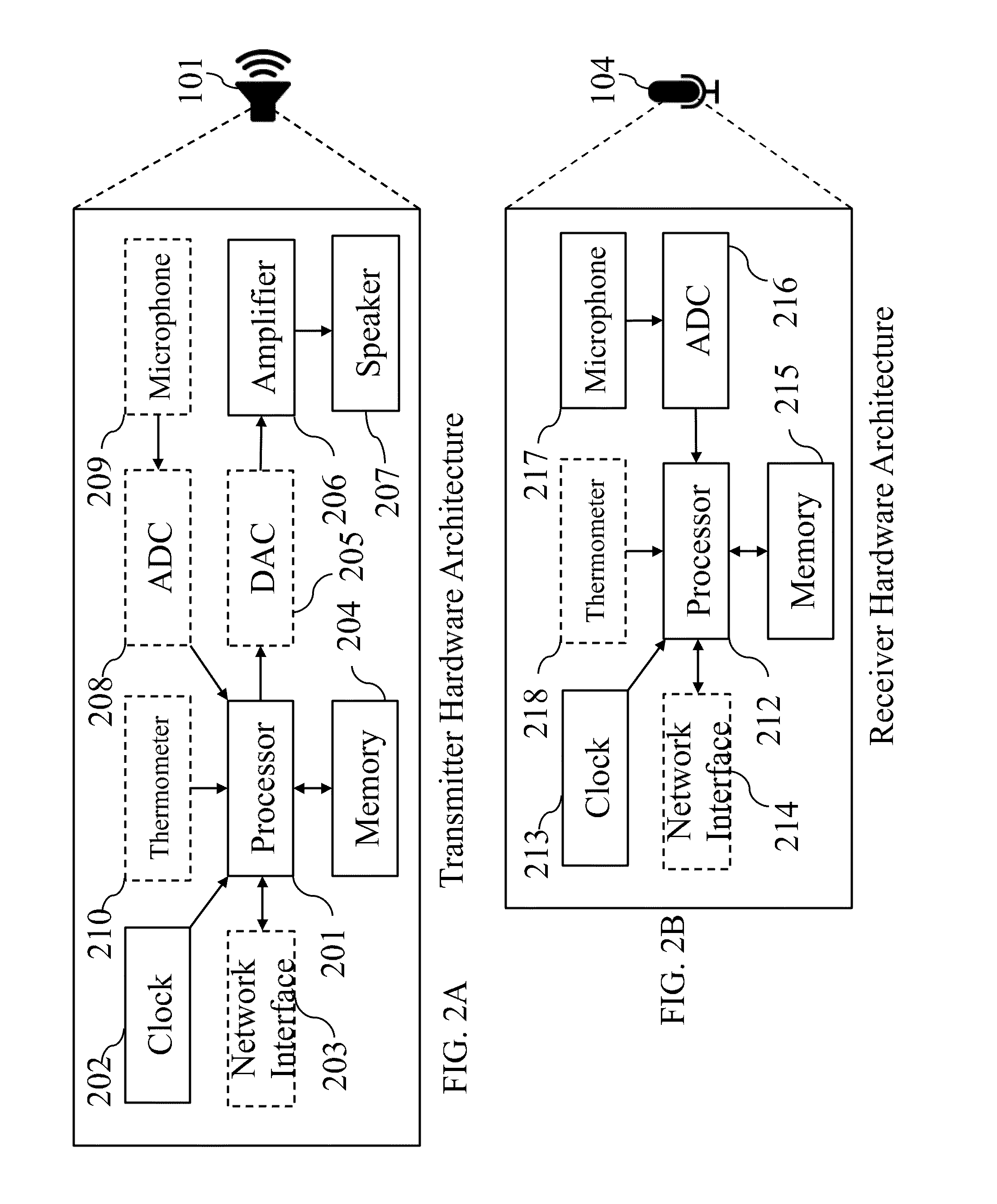Method and System for Ultrasonic Signaling, Ranging and Location Tracking
- Summary
- Abstract
- Description
- Claims
- Application Information
AI Technical Summary
Benefits of technology
Problems solved by technology
Method used
Image
Examples
Embodiment Construction
[0029]As shown in FIG. 1, the system 107 consists of a transmission infrastructure 101-103 along with one or more mobile receiver devices 104. The transmitters 101-103 are capable of emitting ultrasound in the frequencies between 19-24 KHz or above. The receiver(s) 104 are capable of receiving the transmitted ultrasound and performing processing on it. Transmitters may be grouped and time synchronized to one or more time synchronization sources 100. Each transmitter within the same group simultaneously plays a unique ultrasound signal 108-110. These transmitted signals 108-110 are identifiable and can be decoded by the receiver(s) 104 or an external server 106, connected through a network 105. The ultrasound signals 108-110 may be broadcast periodically, triggered by a time synchronization source 100, triggered by an internal clock source 202 (FIG. 2A) and / or triggered by a different internal or external trigger. The hardware generating the ultrasound signals 108-110 may be centrali...
PUM
 Login to View More
Login to View More Abstract
Description
Claims
Application Information
 Login to View More
Login to View More - R&D
- Intellectual Property
- Life Sciences
- Materials
- Tech Scout
- Unparalleled Data Quality
- Higher Quality Content
- 60% Fewer Hallucinations
Browse by: Latest US Patents, China's latest patents, Technical Efficacy Thesaurus, Application Domain, Technology Topic, Popular Technical Reports.
© 2025 PatSnap. All rights reserved.Legal|Privacy policy|Modern Slavery Act Transparency Statement|Sitemap|About US| Contact US: help@patsnap.com



